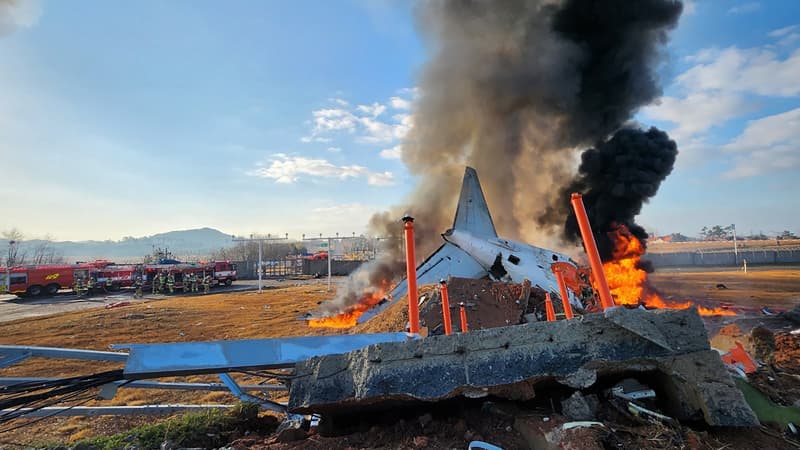The investigation continues in South Korea to try to understand the causes of the accident of a Jeju Air Boeing 737-800 on December 30. This plane crash that killed 179 people is now the deadliest in the country. If for the authorities the plane had to land urgently, it was due to a collision with birds. The airport control tower had sent a notice to this effect to the flight crew three minutes before the accident. The pilot had issued a warning message before the emergency landing.
However, criticism is increasingly focusing on the architecture of the airport and the presence at the end of the runway of a concrete wall against which the plane, which was arriving at high speed, collided. South Korea has just announced a review of compliance with this wall.
“Despite the emergency, the landing went remarkably well,” said a former Korean pilot, Kim Kwang-il, the day before, “quite upset” by the course of events.
A “solid” obstacle
“Normally there is no such solid obstacle at the end of the runway, it goes against the international aviation safety standards recommended by (…) the International Civil Aviation Organization (ICAO) and the European Union Aviation Safety Agency (AUESA). The structure in question caused the plane to crash and burst into flames,” he explained to AFP.
“Outside the airport there are normally only fences (…) that would not cause significant damage. The plane could have skidded more and stopped naturally,” continues the specialist, assuring that “he has never seen this type of artificial structure.” elsewhere.
“The majority of passengers died because of this obstacle, it is worrying,” he concludes, calling on airport authorities to be held accountable.
>> More information coming soon
Source: BFM TV


